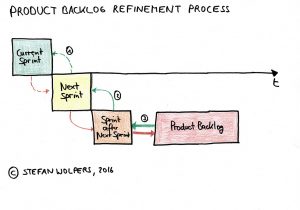It’s a document that’s as bitter to draft as it is to send, but rejection letters, or rejection emails, are an essential process to have, especially for companies with frequent recruitment campaigns.
A lot of recruiters and HR do not fully see the benefit of these rejection letters. Most of the time, the sheer volume of incoming applications makes it very difficult to contact each and every single candidate for the sole purpose of rejecting them. It’s a time-consuming process that seems never-ending when done manually, but there are ways around that.
Beyond that, there are a few things to consider when drafting a rejection email.
1- A positive message = a positive reputation
The way you approach rejection reflects on your company and your brand. Organizations that forego rejection emails are often regarded with disdain by the talent community. It’s considered a rude and negligent act that displays a lack of interest in potential applicants, a lazy approach to talent acquisition, and a company culture of “we don’t care” attitudes.
Such a negative impression can affect your recruitment down the line. The very same pool of previously rejected applicants can be considered completely lost to the organization, something that could have been avoided with a simple rejection email.
That’s why it’s very important to ensure that your rejection email is written in such a way that the message is positively framed. It’s good to go over the reasons for rejection, and assuring the candidate that the decision was not made hastily or without deliberation. A positive rejection message can be tricky to write down, but the encouragement to apply again in the future or the reassurance that they will be considered again can capture the right tone.
2- Employer brand and user experience
Consider the applicant’s user experience just as much as you consider that of a client. The two may have a different purpose, but ultimately their experiences are both important. A rejection letter wraps up the candidate’s experience and ensures that their journey through your recruitment process remains a positive one. Candidates love brands that care, and a rejection letter shows that the recruiter or HR who sent it has considered their feelings, circumstances, and need for a clear outcome.
Furthermore, applicants who receive such emails are left with a positive impression of the company. In fact, it might encourage them to apply again after developing their resume or enriching their experience.
More than that, these candidates have the power to promote your company to friends and acquaintances. Sometimes, receiving a well-written and positive rejection message can be the catalyst for such referrals.
3- Today’s rejected application can be tomorrow’s perfect fit
The global talent market tends to grow more erratic with every passing year. Whereas in the past, the bulk of our troubles were centered around competing for available talent, this year’s pandemic has further amplified these difficulties and restricted previously beneficial practices of global talent acquisition.
This is why every single applicant is extremely valuable.
With such a turbulent talent market, it’s important to never alienate potential employees. It’s very likely that the talent market would never bounce back into its old nature, and as such, companies must ensure that every applicant walks away with the possibility of re-applying firmly in their minds.
Today’s rejected candidate can be tomorrow’s perfect hire.
Profiles change. Those of us in the HR and recruitment sectors know this better than anyone, and the difference between a subpar applicant and an excellent one can be a single year -perhaps less- of valuable work experience.
Adapting to a troublesome task
As we mentioned above, we agree that sending rejection emails or rejection letters can be an extremely troublesome and time-consuming process. However, instead of manually hitting send a thousand times, companies can utilize recruiting software tools in order to automate the process.
For example, Manatal’s mailing service integration allows users to link our ATS platform to mailing service providers such as Mailchimp. Through this integration, users are able to export all of their candidate contacts data and set up a mailing campaign that automates rejection emails.
There is no excuse for not having such a practice in 2020. Employers are aware of the tension that the lack of a rejection letter would cause, the influence it would have on its brand, and the consequences of alienating possible workforce prospects.
Click here to explore our 14-day free trial.
Business & Finance Articles on Business 2 Community(79)
Report Post


